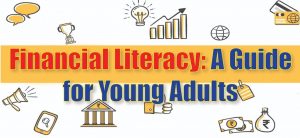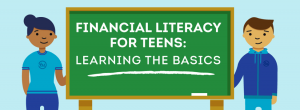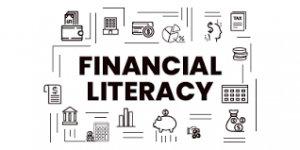How to Teach Financial Literacy to Teens: A Comprehensive Guide
BEST CAREER COUNSELLOR FOR STUDENTS IN DELHI NCR
Teaching financial literacy to teenagers is one of the most important gifts you can give them as they prepare for adulthood. With the right knowledge and skills, teens can make informed decisions about money that will set them up for financial success. However, financial literacy isn’t a topic that’s often addressed in traditional education systems, which is why it’s essential for parents, educators, and mentors to step in and guide teens on their financial journeys.
In this comprehensive guide, we’ll explore how to effectively teach financial literacy to teens, the key areas they need to learn about, and practical tips for making the learning process engaging and impactful.
Top career counseling for students in North Delhi: Rohini, Pitampura, and Shalimar Bagh
Why Financial Literacy Matters for Teens
Before we dive into strategies for teaching financial literacy, it’s important to understand why this topic is crucial for teens. Financial literacy isn’t just about budgeting; it’s about developing the skills to make sound decisions regarding money. For teens, financial literacy provides a foundation that can lead to:
- Better Money Management: Teens who understand budgeting and saving can manage their finances more effectively, avoiding the pitfalls of debt and overspending.
- Understanding Credit and Debt: Knowledge of how credit works, the consequences of high-interest debt, and the importance of maintaining a good credit score can have a long-lasting impact on their financial futures.
- Empowerment: Financial literacy empowers teens to make independent decisions, avoid financial mistakes, and take control of their economic future.
- Preventing Financial Struggles: Teaching teens financial literacy early can help them avoid common pitfalls like falling into credit card debt, accumulating student loans they can’t repay, or being unprepared for financial emergencies.
By instilling financial literacy at an early age, teens will develop habits that benefit them throughout their lives, from adulthood to retirement.
Best career counseling services in South Delhi: Hauz Khas, Saket, and Greater Kailash
Key Concepts of Financial Literacy for Teens
When teaching financial literacy to teens, it’s essential to cover the core areas of personal finance. Here are the key concepts they should learn:
-
Budgeting and Money Management: The foundation of financial literacy is understanding how to manage money effectively. This includes creating a budget, tracking income and expenses, and saving for future goals. Teens need to know how to set priorities and make intentional spending decisions.
-
Saving and Investing: Saving money is a crucial habit, but teaching teens about investing is equally important. They should understand the differences between short-term savings (such as for an emergency fund) and long-term investing (such as for retirement). Introducing teens to compound interest and the concept of building wealth over time is essential.
-
Credit and Debt: Teens need to understand how credit works, including credit scores, interest rates, and the potential consequences of borrowing money. They should be taught how to manage debt responsibly and the importance of avoiding high-interest loans, such as credit card debt.
-
Income and Careers: Teens should learn about the different types of income they might earn throughout their lives. This includes understanding the value of hard work, the different income streams (salary, freelance, passive income), and how their career choices can impact their financial situation.
-
Setting Financial Goals: Helping teens set both short-term and long-term financial goals is key to fostering good money habits. Whether it’s saving for a car, going to college, or building a retirement fund, setting clear goals helps teens stay motivated and make smarter financial decisions.
-
Understanding Taxes: While taxes can seem complicated, it’s important for teens to learn the basics of taxation, including how income tax works and the importance of tax planning. This gives them a more complete understanding of how their money is affected by the government.
-
Avoiding Financial Pitfalls: Beyond understanding how to manage money, teens need to know about common financial mistakes and pitfalls, such as falling for scams, misusing credit, or living beyond their means. Educating teens on these dangers will help them avoid them in the future.
-
Effective Methods to Teach Financial Literacy to Teens
Teaching teens about money can be a challenging task, especially if you want to keep them engaged. However, the key to successful teaching is making financial literacy relatable, practical, and interactive. Here are some effective methods to teach financial literacy to teens:
Best career counseling services in East Delhi: Laxmi Nagar, Preet Vihar, and Mayur Vihar
1. Make Financial Concepts Relatable
Teens often struggle to grasp abstract financial concepts because they may not see how it directly affects them. To make these ideas more relatable, tie lessons to their real-life situations. For example:
- Budgeting: Instead of discussing theoretical budgets, encourage teens to create their own budgets based on their weekly or monthly income (from allowances, part-time jobs, etc.) and track their spending.
- Credit and Debt: Use real-life examples, such as a credit card bill or student loan repayment, to show the potential consequences of borrowing money and carrying debt.
- Investing: Introduce teens to simple investment tools like mutual funds or stocks by comparing them to things they are familiar with, like sports betting (risk vs. reward) or the concept of saving for a desired item.
2. Use Interactive Tools and Apps
Technology can be an excellent way to make financial learning engaging. There are various apps and online tools designed to help teens learn about money:
- Budgeting Apps: Apps like Mint or YNAB (You Need a Budget) can help teens track their spending and manage their budget.
- Stock Market Simulators: Platforms like Stockpile or the stock market game allow teens to practice investing without real money, so they can see the potential ups and downs of the market in a risk-free environment.
- Savings Apps: Apps such as Qapital or Chime can teach teens how to save by setting up automatic savings goals and earning interest on their savings.
3. Introduce Hands-On Activities
Learning about money is often more effective when teens can actively practice managing it. Here are a few hands-on activities that can help:
- Mock Business Ventures: Encourage teens to start their own small business or side hustle, such as offering babysitting services, mowing lawns, or selling handmade crafts. This teaches them about earning income, managing expenses, and tracking profits.
- Budgeting Exercises: Give them a hypothetical budget based on a monthly income and set expenses (rent, groceries, entertainment) to see how they would prioritize their spending.
- Role-Playing: Engage in role-playing activities where you simulate real-world financial scenarios, such as making purchases, applying for a loan, or negotiating salary.
Best career counseling services in West Delhi: Janakpuri, Rajouri Garden, and Punjabi Bagh
4. Lead by Example
Teens often learn by observing the behaviors and attitudes of adults around them. By demonstrating good financial habits in your own life, you can be a role model for them. Practice smart financial decisions, such as:
- Budgeting your own expenses and sticking to it.
- Saving money regularly and setting aside emergency funds.
- Avoiding high-interest debt or credit misuse.
- Discussing financial goals openly and working toward them.
By sharing your experiences and challenges with money, you can make financial literacy more tangible for teens and show them that managing money is an ongoing learning process.
5. Incorporate Financial Literacy into Everyday Conversations
Financial literacy doesn’t have to be a formal lesson—it can be integrated into daily life. Some ways to do this include:
- Grocery Shopping: Take teens with you to the grocery store and show them how to compare prices, use coupons, or choose items that fit within your budget.
- Planning a Family Vacation: Involve your teen in planning and budgeting for a family trip. Discuss costs like transportation, lodging, food, and activities, and ask for their input on how to save money.
- Paying Bills: If your teen has a part-time job, help them understand their paycheck and taxes. You can also involve them in paying utility bills or discussing family finances.
These real-world examples can help reinforce financial concepts in a practical and meaningful way.
6. Encourage Reflection and Open Dialogue
As teens learn about money, it’s essential to create an environment where they feel comfortable asking questions and discussing their financial challenges. Encourage open dialogue by:
- Discussing Mistakes: Don’t be afraid to discuss your own financial mistakes with them. Share how you learned from those mistakes and what steps you took to improve your financial habits.
- Asking Questions: Pose questions to your teen about their financial goals, saving habits, and future plans. This will encourage them to think critically about their finances and make more intentional decisions.
Conclusion
Teaching financial literacy to teens is an essential step in preparing them for adult life. By providing them with the knowledge and skills to manage money, save, invest, and avoid debt, we are setting them up for a lifetime of financial success. The key is to make the learning process interactive, relatable, and engaging—whether through hands-on activities, technology, or everyday financial conversations.
Ultimately, financial literacy isn’t just about teaching teens how to balance a checkbook or avoid credit card debt—it’s about empowering them to take control of their financial future with confidence. With the right tools and guidance, teens can develop the financial habits that will serve them for years to come.











